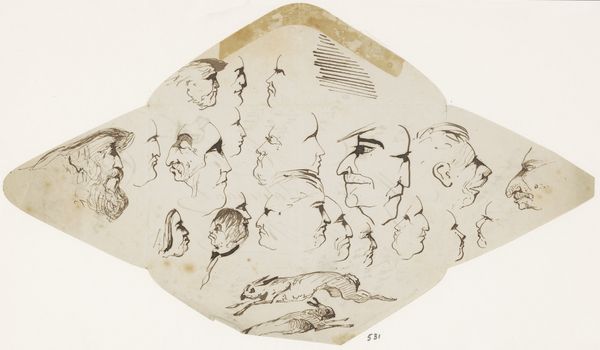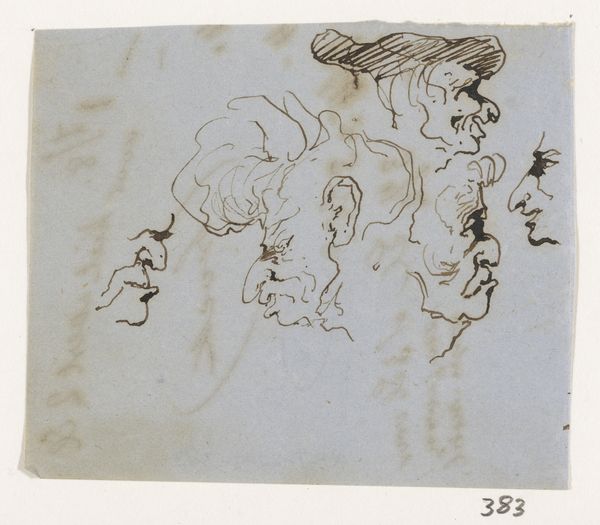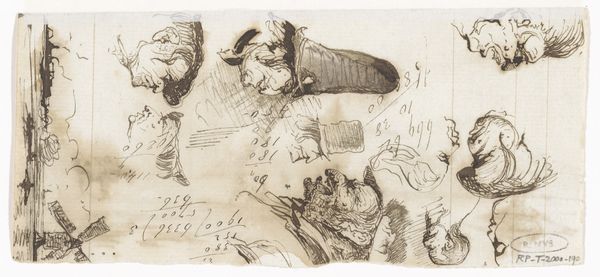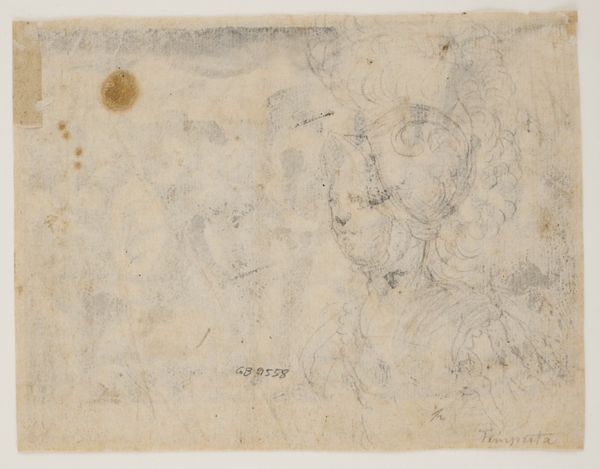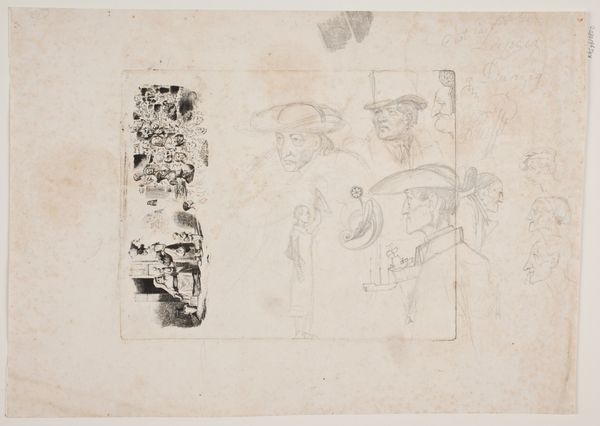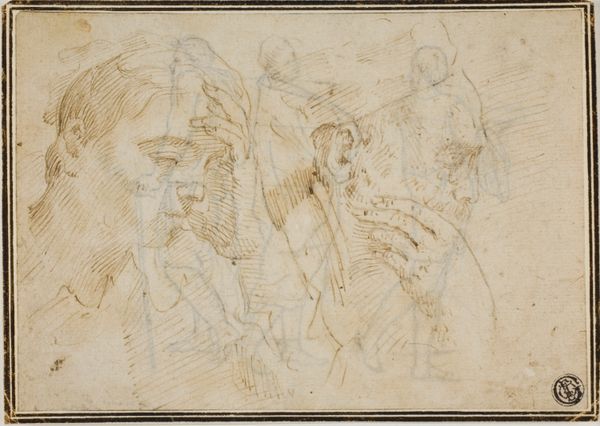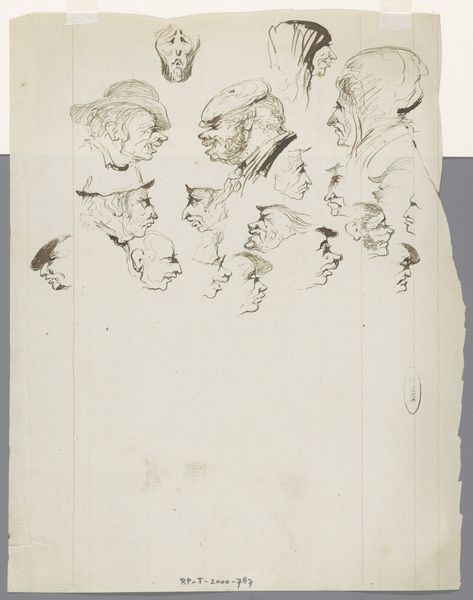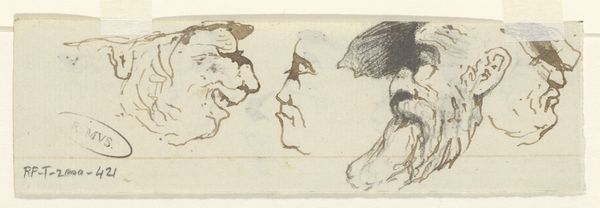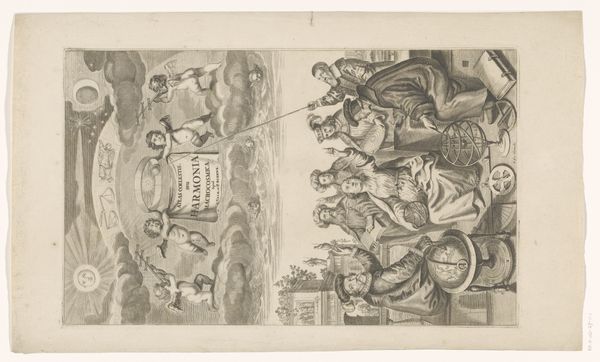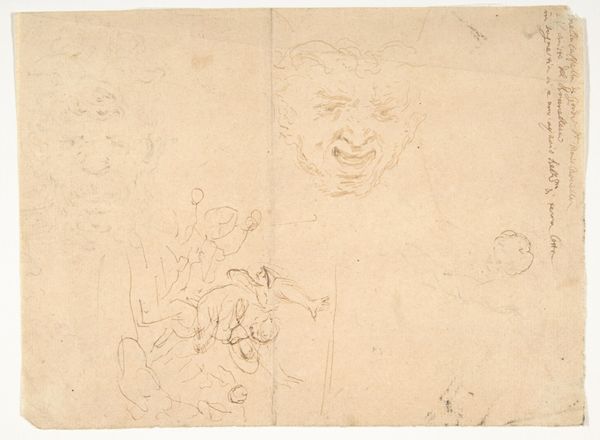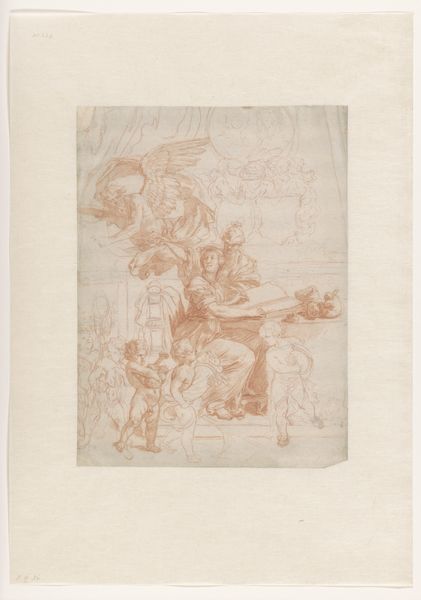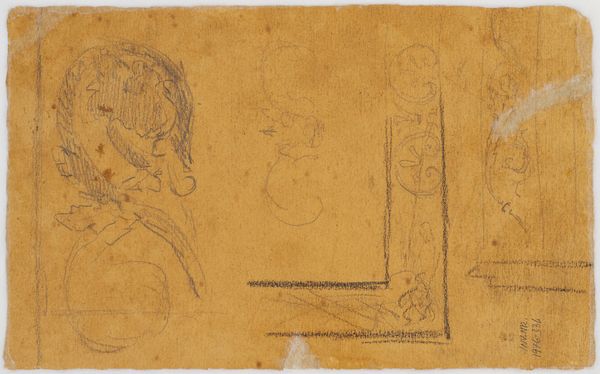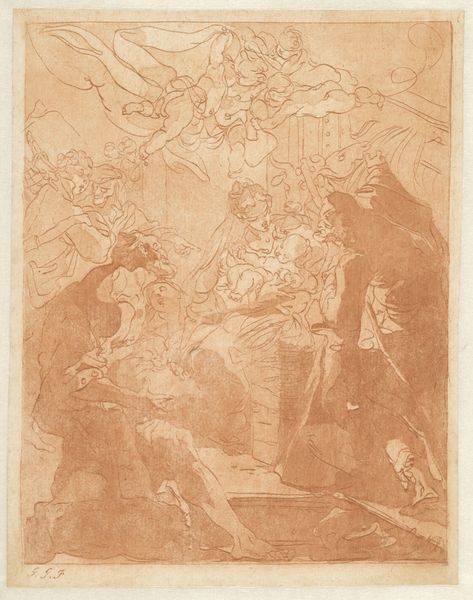
Dimensions: height 135 mm, width 177 mm
Copyright: Rijks Museum: Open Domain
Curator: Looking at this sheet, teeming with faces sketched in pen, pencil, and ink, it's almost like peering into the artist’s mind. This is a drawing titled "Studieblad met koppen," or "Study Sheet with Heads," made around 1865 by Johannes Tavenraat and currently held in the collection of the Rijksmuseum. Editor: The density of the work certainly makes a powerful initial impact. The variety of sketching materials and their contrasting qualities also grab my eye. Some of these faces appear so quickly rendered while others feel like carefully observed portraits. Curator: Precisely. We can view this through the lens of Tavenraat’s position within the artistic landscape of his time. Academic art valued precise studies as foundational for finished works. But I also find the date compelling, placing this piece right in the midst of shifting cultural perceptions about self and other. Are these random sketches or reflections on societal archetypes of his time? Editor: Absolutely, the raw immediacy feels connected to the working processes typical for academic drawing and Romantic portraiture, emphasizing craft, yet the tonal paper support and varied sketching mediums demonstrate an economic way to test out visual ideas and study varied social subjects, even a sort of mass-produced effect by presenting many sketches at once, almost like the newspaper cartoons from the era. Curator: And I see within it that tension between observation and idealization so characteristic of the period. It raises complex questions about whose faces get represented, how, and to what purpose. The almost frenetic nature of the compositions mirrors something of the intense cultural discourse surrounding identity at the time, with an implicit connection between portraiture, social standing and public roles. Editor: Considering his choice of supports and the different pen, pencil and ink markings, one can discern much information on his processes and also speculate whether such practice was simply academic or carried out with commercial ambitions. One might consider the status of “sketch” within different material economies. Curator: True. And I keep returning to those faces, looking for traces of lived experience. Do they reflect Tavenraat's immediate social sphere or are these perhaps explorations of characters from literature or theatre? Editor: Reflecting on materiality and method together is invaluable, considering their link to production models. We get an overview of 19th century artistic social conventions, too, I'd say. Curator: Indeed, seeing this study sheet encourages a deeper understanding about social issues of representation in 19th century Europe. Editor: Agreed, viewing Tavenraat's piece gives insight into a time that had new tools, new classes of sitters, and emerging aesthetic frameworks around art production.
Comments
No comments
Be the first to comment and join the conversation on the ultimate creative platform.
